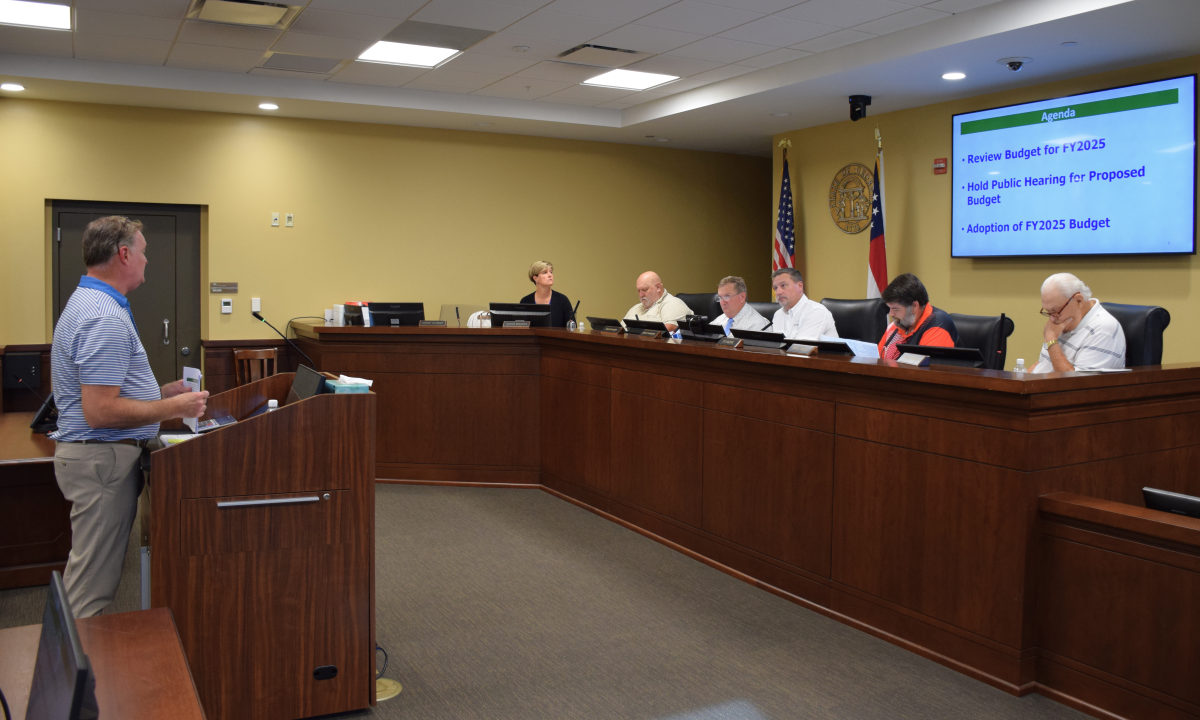
Georgia had a spike in its rate of uninsured children between 2016 and 2018, according to a report released Wednesday.
The state in 2018 had an uninsured rate among children of 8.1 percent, up from 6.7 percent two years before. Only Tennessee’s rise of 1.5 percentage points was a greater increase in the U.S. over that time.

An estimated 217,000 Georgia children were without medical coverage last year, said the report from the Georgetown University Center for Children and Families. Georgia’s rate of children without coverage is fifth-highest in the nation.
“This data confirms what we already know: Our state needs to break down barriers to coverage for children and families,’’ said Erica Fener Sitkoff, executive director for Voices for Georgia’s Children, an advocacy group. “Many uninsured children are eligible for but not enrolled in Medicaid. We are looking forward to working with the administration to overcome these barriers and get children the coverage they need.’’ The group has pointed to the limited hours of the Medicaid application process as an obstacle for families to overcome.
The rise in kids without coverage mirrors the increase in Georgians overall who have no health insurance. Georgia’s uninsured rate rose slightly in 2018, to 13.7 percent, the U.S. Census Bureau reported last month. That gives Georgia the nation’s third-highest rate of people without health insurance.
Nationally, the number of uninsured children in the United States increased by more than 400,000 between 2016 and 2018, bringing the total to more than 4 million uninsured children in the nation.
The trend is a reversal of coverage gains since 2008 when the rate of children was nearly 10 percent.
 The report said 5.2 percent of children nationally had no coverage in 2018, up from 5.0 percent the year before and 4.7 percent in 2016, which was the lowest point in the past decade.
The report said 5.2 percent of children nationally had no coverage in 2018, up from 5.0 percent the year before and 4.7 percent in 2016, which was the lowest point in the past decade.
One factor in the erosion of coverage, the report said, was the attempted repeal of the Affordable Care Act, a law that has facilitated kids’ coverage in recent years. Though the attempt was unsuccessful, Congress repealed the penalty for people who did not obtain health insurance.
Other factors cited include cuts in funds for promoting enrollment in the ACA insurance exchanges; and in some states, red tape that makes it harder to enroll in or renew government coverage.
“The welcome mat has been withdrawn,’’ said Joan Alker, executive director of the Georgetown University Center for Children and Families and lead author of the report.
The number of Georgia children covered by Medicaid has dropped from 1,189,273 in July 2018 to 1,155,541 last month, state figures show. But enrollment in PeachCare (CHIP coverage) in Georgia rose slightly over that time, from 133,251 to 135,160.

The report’s authors also said there has been ‘‘a chilling effect’’ from the Trump administration’s tightening of immigration policies, which they said has sown a climate of fear in some ethnic communities. This crackdown has left many families reluctant to enroll their children in public coverage for fear of having this held against them, the authors said.
There is “a lot of fear among these families,’’ said Marivi Wright, community outreach coordinator for The Players Center for Child Health at Wolfson Children’s Hospital in Jacksonville, Fla.
This is the ninth annual report on uninsured children published by the Georgetown center. Alker described it as ‘‘a call to action’’ for elected officials.

The situation “likely will get worse before it gets better,’’ said Alker. She said that when the currently strong economy falters, more children will tend to fall off the insurance rolls.
Loss of children’s health coverage was most pronounced for white children and Latino children, and for young children under age 6. In the latter group, their uninsured rate jumped from 3.8 percent to 4.3 percent.
Health coverage for kids improves their access to preventive and routine care, leading to better health, educational and economic outcomes as adults, and protecting their families from medical debt and bankruptcy, the report said.
Preventive care for kids “is extremely important,’’ said Tricia Brooks, a research professor at the Georgetown Center. For example, she said, uninsured children “may miss multiple immunizations.”
Without health insurance, a child with an illness that could have been properly dealt with through primary care can end up in the hospital, said Dr. Lanre Falusi, a pediatrician and spokesperson for the American Academy of Pediatrics.
“I worry about the services these children are missing’’ and the impact on their health, Falusi said.
States in the South have a disproportionately large share of uninsured kids relative to their child populations, the report said.
Texas has the largest proportion of uninsured children and is home to more than one in five of the uninsured children in the nation.
Three-quarters of the children who lost coverage between 2016 and 2018 were in states that have not expanded Medicaid, a step that extends coverage to more low-income adults. The uninsured rate for children in these states increased at triple the rate experienced by those in states that expanded the program.
Georgia has not expanded Medicaid, but Gov. Brian Kemp is moving forward with waiver proposals to the federal government that could increase coverage in the state.






